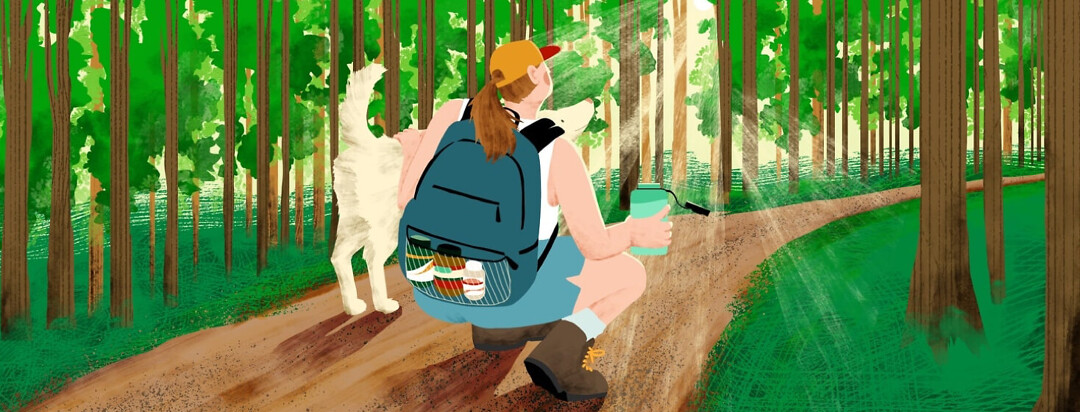Tips for Hiking With Narcolepsy
From winding vegetation-strewn trails to black-topped paved paths, hiking can look a lot different to many different types of people.
What does hiking look like for a person with narcolepsy?
Like many things in my life, my hiking activities have changed as I learned to live with my sudden onset of narcolepsy type 1 in 2017. There are a few practices that I have had to implement that make the experiences smoother.
Have a 'go' bag
I find that packing a bag can take away from my much-needed energy store. It might sound silly but with the severity of my disease, every bit of energy counts. Thus, ensuring that my bag is packed and ready for hiking at a moment’s notice helps me greatly. I also suffer from brain fog, and having to remember to do one less task is always helpful.
Use nature to keep you stimulated while hiking
I recently started birdwatching. I have been pouring over books on Western bird species. I am still extremely slow at identifying the birds I see in nature. In fact, I usually have to take notes on their appearances and behaviors to then identify them once I am home safe with my books.
When I am hiking, I enjoy watching the natural wildlife just going about their days. Not only does it provide me with immense free entertainment, but it also provides mental stimulation. This can help me blink away the sleepiness on occasion. I experience a lot of automatic behaviors due to my symptoms, and activities like this can help ground me.
Take naps away from trails if possible (but not too far!)
If I find myself having a sleep attack while hiking, I try to find a comfortable spot to take naps. This spot is normally away from the most populous trail sites. Waking up confused in a stupor far away from any trails could go down poorly.
I prefer to have the main trail in my view so as not to get lost. However, I typically hike alone and prefer to observe “stranger danger” practices when on the trail. This brings me to my next point…
Bring along a furry friend — I bring my narcolepsy service dog
I always bring my service dog with me on the trails. Some trails do not allow dogs, so if you are bringing your pet dog hiking, always be sure to check that your hiking destination is pet-friendly. As a trained service dog, my German Shepherd can accompany me wherever I go.
One of her tasks is to lay near me while I am asleep. This helps me feel safer while being forced to sleep in public places. I, for one, would feel deterred from messing with someone with a giant dog lying next to them, but that’s just me.
Pack nutritious snacks and water
It is vital to stay hydrated while hiking. It is recommended that for every hour of hiking you plan to do, you should bring 2L of water. I find this especially important for me in keeping my narcolepsy symptoms from flaring up due to too much physical exertion.
Keeping salty and sweet snacks can help to restore electrolyte balances lost in sweat and provide an extra kick of energy that I might need on the trail.
Stay safe out there, and remember – leave no trace!

Join the conversation